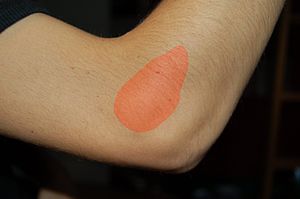Tennis elbow is a painful condition in which pain is experienced on the outside of your elbow with lifting and gripping (especially when your elbow is straight) and can lead to weakness in the elbow and hands. The condition can be attributed to poor technique related to tennis, however, more people suffer from tennis elbow than just tennis players. If you’re reading this, you may fall into this category. In fact, the condition is attributed to playing tennis in only 5% of the cases!
Tennis elbow commonly occurs in those who are middle-aged. Although many believe tennis elbow (also known as lateral epicondylitis) is an inflammatory condition (“-itis” means inflammation, right?), research shows that in many cases little to no inflammation is present. More recently, tennis elbow has been described in terms that do not suggest inflammation is present, such as tendinopathy, tendinosis, or lateral epicondylosis. These terms imply tendon degeneration, which research indicates is a cause of this condition.
Tennis elbow is caused by overuse and overload of the tendon beyond what it is capable of doing. Overuse and overload can mean different things to different people. It depends on how strong you are and what your body is capable of tolerating. For some people, tennis elbow can be provoked by doing more household chores in one day than normal. Others may provoke symptoms by participating in more sporting activities than normal (such as not swinging a golf club all winter and then taking a trip that includes playing 18 holes of golf 4 days in a row).
Overuse and overload leads to small tears in the tendon. Under these conditions, the tendon may not be able to repair itself properly, leading to more small tears. As part of the inadequate healing, the collagen fibers of the tendon, which give the tendon strength and support, become disorganized and weak and more “fibrotic” scar tissue is formed. The tendon becomes thicker, inflexible, and is not very strong or resilient. The improper healing of the tendon can lead to more pain and larger tears in the tendon and muscle.
Many of my patients ask about whether a cortisone injection would help. Research shows that medication and cortisone injections can provide adequate short-term pain relief, but no lasting effects, and one study even noted that tennis elbow treated with cortisone injections had poorer outcomes after 6 weeks of treatment and increased recurrence compared to those who had physical therapy or even for those who took a “wait and see” approach. Inadequate and or delayed treatment can lead to the problem becoming chronic. For more info and my opinion about cortisone injections, click here.
Treatments for this condition will vary based on the stage of healing. Physical therapists are trained to identify the stage of healing of tennis elbow and the appropriate course of treatment. Physical therapists use specific manual therapy techniques and exercises to help reorganize the collagen within the tendon, promoting better healing and improving its strength. If you think you may have tennis elbow, see a physical therapist. You can find one through the APTA.
References
Clinical Evidence Handbook: Tennis Elbow – March 1, 2007 – American Family Physician. (n.d.). . Retrieved March 1, 2011, from http://www.aafp.org/afp/2007/0301/p701.html
Andres, B., & Murrell, G. (2008). Treatment of Tendinopathy: What Works, What Does Not, and What is on the Horizon. Clinical Orthopaedics and Related Research, 466(7), 1539.
Todd E Davenport, Kornelia Kulig, Yogi Matharu, & Cesar E Blanco. (2005). The EdUReP Model for Nonsurgical Management of Tendinopathy. Physical Therapy, 85(10), 1093.
Mobilisation with movement and exercise, corticosteroid injection, or wait and see for tennis elbow: randomised trial — Bisset et al. 333 (7575): 939 — bmj.com. (n.d.). . Retrieved February 28, 2011, from http://www.bmj.com/content/333/7575/939.full
Coombes, B., Bisset, L., & Vicenzino, B. (2010). Efficacy and safety of corticosteroid injections and other injections for management of tendinopathy: a systematic review of randomised controlled trials. The Lancet, 376(9754), 1751.












March 1, 2011
General Information, Orthopaedic, Sports Medicine